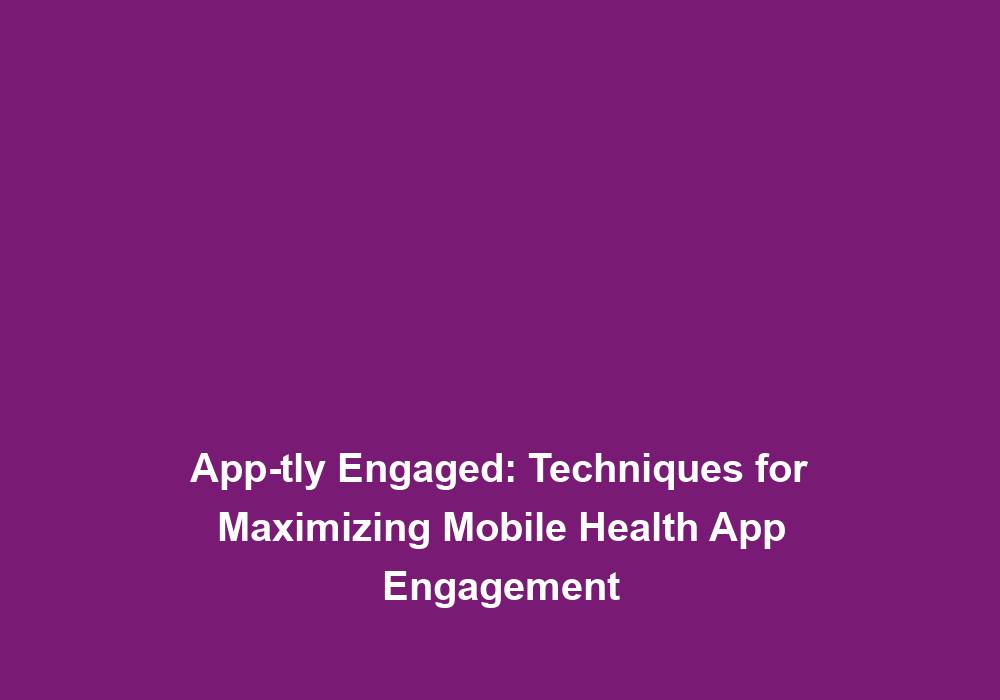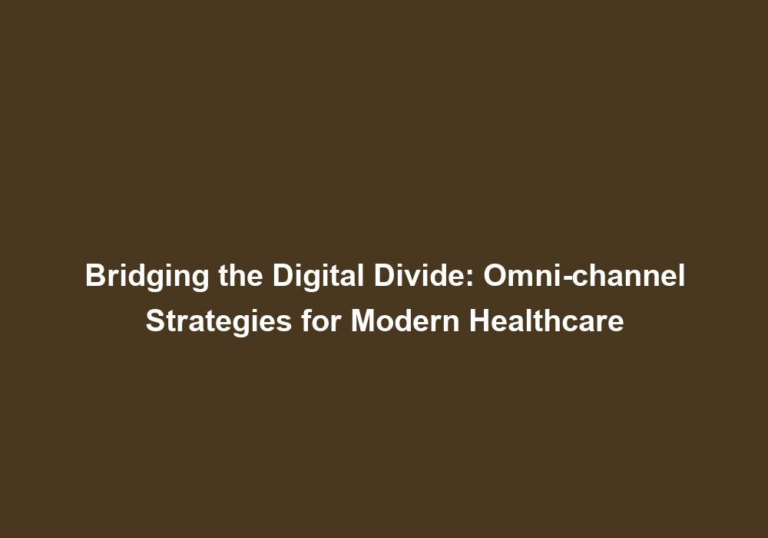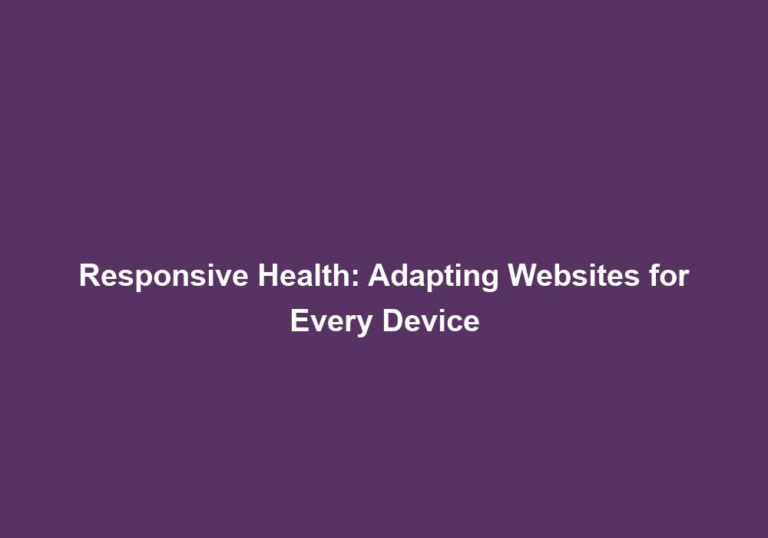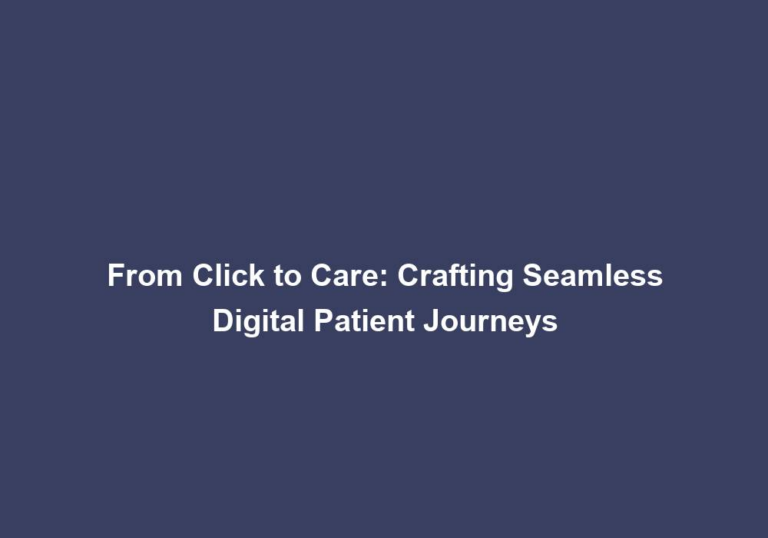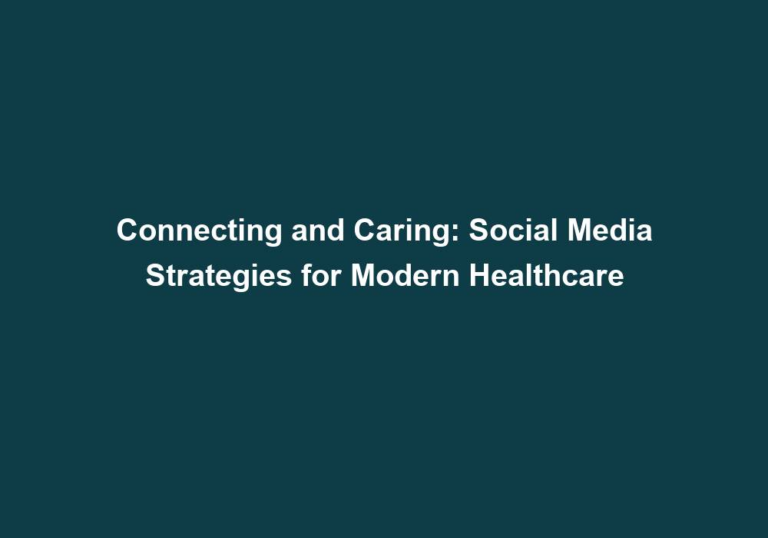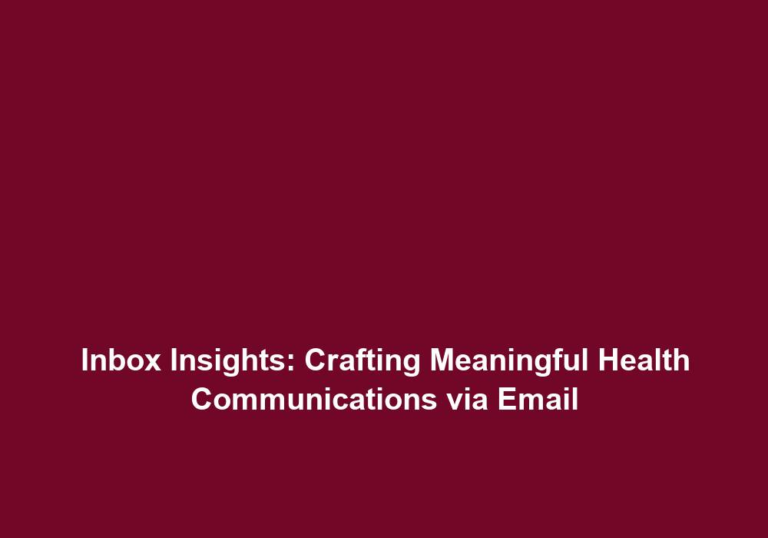App-tly Engaged: Techniques for Maximizing Mobile Health App Engagement
In today’s digital age, mobile health apps have become increasingly popular as people seek convenient ways to monitor and manage their health. These apps provide a wide range of functionalities, from tracking physical activity to managing medications and even accessing virtual consultations with healthcare professionals. However, simply developing a mobile health app is not enough to ensure its success. Maximizing user engagement is crucial to drive long-term usage and deliver meaningful health outcomes. In this article, we will explore effective techniques for maximizing mobile health app engagement.
1. User-Centric Design and Intuitive Interface
The first and foremost aspect of ensuring app engagement is to design and develop a user-centric mobile health app. A well-designed app should have an intuitive interface, making it easy for users to navigate and access the app’s features. The app’s layout should be visually appealing, with clear and concise instructions guiding users on how to perform various tasks. By prioritizing user experience and designing with simplicity in mind, you can significantly enhance engagement levels.
- Use a clean and simple design that is visually appealing and easy to navigate.
- Provide clear and concise instructions to guide users on how to use the app’s features.
- Ensure that the app’s interface is intuitive, allowing users to easily access the information they need.
- Consider conducting user testing and gathering feedback to identify any areas for improvement in the app’s design and interface.
2. Personalization and Customization
Mobile health apps that offer personalization and customization options tend to attract and retain users for longer periods. By allowing users to tailor the app according to their preferences, such as setting goals, selecting specific health metrics to track, or choosing preferred notifications, you can create a sense of ownership and investment in their health journey. Personalized features not only increase engagement but also improve the overall user experience.
- Enable users to set personalized health goals and track their progress towards them.
- Allow users to customize the app’s interface and settings to suit their preferences.
- Provide options for users to choose the specific health metrics they want to track.
- Implement personalized notifications and reminders to keep users engaged and motivated.
3. Gamification and Rewards
Gamification is a powerful technique that leverages game-like elements to motivate and engage users. By incorporating gamified features into your mobile health app, such as challenges, badges, leaderboards, and rewards, you can turn health monitoring and management into an enjoyable and interactive experience. Users are more likely to stay engaged and motivated when they receive rewards or recognition for their achievements, leading to increased app usage and better health outcomes.
- Implement challenges and milestones that users can strive to achieve.
- Award badges or achievements to users when they reach specific goals or milestones.
- Create leaderboards to foster healthy competition among users.
- Provide rewards, such as discounts on healthcare services or exclusive content, to incentivize continued app usage.
4. Social Integration and Community Building
Humans are inherently social beings, and incorporating social features into your mobile health app can significantly enhance engagement. By enabling users to connect with friends, family, or like-minded individuals within the app, you create a sense of community and support. Users can share their progress, achievements, and challenges, fostering accountability, motivation, and healthy competition. Moreover, social integration allows users to seek advice, share experiences, and provide emotional support, making the app more valuable and engaging.
- Implement social sharing features that allow users to share their progress on social media platforms.
- Create a community within the app where users can connect and interact with each other.
- Enable users to join groups or forums based on their specific health interests or goals.
- Facilitate communication between users through messaging or chat features.
5. Real-Time Feedback and Progress Tracking
Providing users with real-time feedback and progress tracking is essential for maintaining their engagement. Users want to see the impact of their efforts and understand how they are progressing towards their health goals. Incorporating features like step counters, calorie trackers, or sleep monitors not only help users track their progress but also provide instant feedback, reinforcing positive behaviors and encouraging continued app usage.
- Integrate activity trackers, such as step counters or heart rate monitors, to allow users to monitor their physical activity in real-time.
- Provide feedback on users’ progress towards their health goals, highlighting achievements and areas for improvement.
- Use visualizations and charts to present users with a clear overview of their health data.
- Send push notifications or reminders to keep users engaged and motivated to reach their targets.
6. Regular Updates and New Features
To keep users engaged and excited about your mobile health app, it is essential to provide regular updates and introduce new features. Continuously improving and expanding the app’s functionalities based on user feedback and evolving industry trends demonstrate your commitment to user satisfaction. New features, such as integration with wearable devices or the latest health tracking technologies, can attract new users and retain existing ones, ensuring long-term engagement.
- Gather user feedback and suggestions to identify areas for improvement and new feature ideas.
- Conduct regular app updates to address bug fixes, performance enhancements, and security updates.
- Stay informed about the latest trends and advancements in mobile health technology to identify opportunities for new feature development.
- Communicate with users about upcoming updates and feature releases to build anticipation and excitement.
7. Seamless Integration with Healthcare Providers
Enabling seamless integration with healthcare providers can significantly enhance app engagement, especially for apps providing telemedicine or virtual consultation services. When users can easily access healthcare professionals within the app, schedule appointments, or receive personalized advice, they perceive the app as an essential tool in their healthcare journey. Integration with electronic health records (EHRs) or other healthcare systems can further streamline communication and drive engagement.
- Develop secure and user-friendly features that allow users to connect with healthcare providers within the app.
- Enable users to schedule appointments or virtual consultations with healthcare professionals directly through the app.
- Facilitate the sharing of health information between the app and healthcare providers’ systems to ensure continuity of care.
- Implement features that allow users to access their medical records or test results within the app.
Conclusion
Maximizing mobile health app engagement requires a multifaceted approach that focuses on user-centric design, personalization, gamification, social integration, real-time feedback, regular updates, and seamless integration with healthcare providers. By implementing these techniques, you can create an app that not only attracts users but also keeps them engaged, motivated, and empowered to manage their health effectively. Remember, engagement fosters better health outcomes and ultimately contributes to the overall success of your mobile health app.

